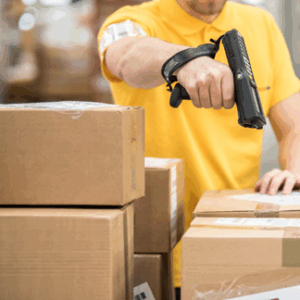Textile recycling :
where do our clothes really go after they've been donated?
Dive into the heart of the textile recycling sector in France. Key figures, the limits of the system and innovative solutions to the fast-fashion crisis.
Donating clothes seems like a simple, almost harmless act. We put them away, take them to a collection point, give them to a charity and think that they will have a second life. But this act of solidarity masks a much more complex reality, made up of overproduction, logistics, imperfect sorting and often invisible environmental and social impacts.
In 2024, the French bought 3.5 billion new textile items (clothing, household linen, shoes), which represents an average of 42 items per person. This constant influx is increasing the pressure on collection and recycling channels. On the one hand, Refashion estimates that 268,161 tonnes of discarded textiles will be collected by 2023, or around 4 kg per inhabitant, while more than 12 kg of textiles are put on the market every year. On the other hand, a large proportion of what is donated cannot be used or exploited, either because of a lack of quality or because the logistics costs are too high.
Fast fashion feeds a stock of lower quality, more quickly obsolete clothes, often incinerated, thrown away or sold at low prices in foreign markets, with major environmental consequences such as CO₂ emissions, the accumulation of waste, the massive use of plastics and the dispersion of microfibres.
In this article, we’ll explore where our clothing donations really go, reviewing the links in the collection, sorting, resale and recycling chain. We will identify the current limits and see how each player can contribute to a more virtuous system.
The textile collection sector in France: key figures and players
Each discarded item of clothing, pair of shoes or household linen follows a complex collection path. Understanding this sector, its recent data and its main players will help us to identify its strengths, but also its weaknesses.
Chiffres récents
- The tonnage of used textiles, linen and footwear (TLC) collected will amount to 289,393 tonnes in 2024.
- This represents an average of 4.27 kilos of TLC per inhabitant.
The number of voluntary drop-off points (PVDs), i.e. the bins or containers where individuals can drop off their textiles, exceeds 47,900 points in more than 16,700 communes.
Main actors
- Refashion: accredited eco-organisation for textiles, household linen and footwear. It steers the TLC sector, sets targets (including achieving a collection rate of around 60% by 2028) and finances collection, sorting and awareness-raising schemes.
- Le Relais: a long-standing player and cooperative in the social economy. It manages a large number of donation, collection, sorting and recycling centres. Currently in crisis due to lack of funding.
- Local authorities: they play a role in setting up the bins, communicating with citizens and managing textile waste locally via the RRPs. Elles sont soutenues ou financées en partie par Refashion pour des campagnes locales de sensibilisation.
Points of attention / weaknesses
- The actual cost of sorting is estimated at around €304/tonne, while the aid paid by the eco-organisation amounts to around €156/tonne.
- In July 2025, Le Relais suspended collection from its kiosks nationwide, citing insufficient funding.
- In addition, there is considerable regional heterogeneity, with some communes having much better collection points than others.
What happens to our clothes after we donate them?
When you drop a garment off at a recycling point or donate it, there are several stages in the process, with major differences depending on the quality, condition and composition of the textile. Understanding this process helps us to see where things go wrong.
Reception & initial sorting
First, the collected clothes are taken to sorting centres. There, they are separated according to various criteria:
- Condition: clothing in good condition (potentially reusable), worn but repairable, damaged.
- Material: natural fibres (cotton, wool) or synthetic fibres or blends (polyester, polyamide, composite fibres) – these pose the most problems for recycling..
- Type: household linen, shoes, accessories.
This sorting is often done manually, with an eye to what can be sold second-hand or donated locally, and what needs to be recycled or transformed.
Second life/reuse
Once sorted, most textiles in good condition are sent for second-hand distribution:
- In France, of the ≈ 289,000 tonnes of used textiles collected in 2024, ≈ 56.8% were reused (second-hand) according to Refashion.
- Many of these are exported to foreign markets. Resale in France plays a role, but export remains an important outlet.
Recycling & material recovery
What cannot be reused goes into other channels:
- Mechanical recycling: fraying, transformation of fibres to produce insulation, padding, stuffing or new fibres. This process is limited by the complexity of textile compositions.
Energy recovery: some non-recyclable textiles (or complicated mixtures) are incinerated or used as solid recovered fuel (SRF).
Valuation rates & key data
- In 2024, 289,393 tonnes of used textiles were collected.
- Of these, 206,136 tonnes were sorted.
- The recycling rate (material transformed) was approximately 24.28% of the volume collected.
Almost 99.8% of the textiles collected are recovered in one way or another (second life, recycling, CSR, rags).
The limits of textile recycling: fast fashion and hidden waste
While collection and sorting can give a second life to some textiles, recycling still comes up against structural obstacles. These limitations explain why a significant proportion of donated clothing ends up being destroyed or exported.
Fast fashion, a flow impossible to absorb
The French market is saturated by textile over-consumption. In 2024, more than 3.5 billion new items were put on the market. The proliferation of collections and the decline in quality associated with fast fashion mean that many of these items are unsuitable for re-use. As a result, a lot of donated clothing finds no takers, either in France or abroad.
Massive exports and perverse effects
A large proportion of the textiles collected is sent abroad, mainly to Africa and Asia. While some of it is actually used, some ends up in open-air dumps due to a lack of local infrastructure to absorb it. Mountains of clothing have been documented in Chile (the Atacama desert) and Ghana, symbolising the excesses of a globalised system.
In addition, this exposes the industry to political uncertainties, customs barriers and competition (new foreign suppliers).
The gradual disappearance of unprofitable textile terminals
In 2025, several major players such as Le Relais suspended their collection activity due to a lack of sufficient funding. The actual cost of sorting (≈ €304/tonne) far exceeds the subsidies received (≈ €156/tonne). This economic equation threatens the viability of the system and explains why some territories are seeing containers disappear.
Recycling limited by the composition of textiles
Almost 60% of textiles on the market contain polyester or cotton-polyester blends. These complex fibres are difficult to separate and therefore difficult to recycle effectively. What’s more, returned garments are often too damaged, requiring time-consuming and costly manual sorting and limiting recycling.
The technology available remains limited and expensive, with industrial volumes still insufficient. As a result, a large proportion of clothing that cannot be reused ends up being incinerated or recovered as energy.
The risk of long-term saturation
Faced with a constant influx of new clothes and stagnating treatment capacity, the system is tending towards saturation. Even with awareness-raising campaigns, the balance remains fragile. As long as global textile production continues to grow at this rate, recycling will not be able to compensate for the volumes generated.
Industrial recycling capacity remains underdeveloped, although it is increasing. For example, projects such as the Nouvelles Fibres Textiles site at Amplepuis aim to increase the volumes recycled.
Innovations and new solutions for used textiles
The challenges of textile recycling (mixed fibres, variable quality, logistics, cost) are driving innovation. Here are the most promising avenues in France and Europe, some already operational, others under development.
Chemical recycling and hybrid processes
- The Circ project involves a plant in Moselle (Saint-Avold) dedicated to polycotton (a cotton-polyester blend), capable of processing 70,000 tonnes a year from 2028. The patented hydrothermal process will enable polyester and cotton to be separated and recycled simultaneously.
- Coleo, a Spanish operator, is investing in a mechanical recycling and intelligent sorting unit in eastern France, to process 20,000 tonnes a year.
- Recyc’Elit is working on projects such as REGIOGREENTEX, which aims to industrialise the chemical recycling of complex multilayered or coloured textiles, to produce purified monomers or recycled polyester yarns.
Automation, intelligent sorting and material preparation
- Synergies TLC is developing an industrial automated textile sorting and untying unit (“Nouvelles Fibres Textiles” project) to improve the preparation of recyclable materials.
- Through its “Industrial Challenge”, Refashion finances projects that innovate in automated sorting, the preparation of non-reusable textiles and their transformation into secondary materials.
Local processing & recovery units
- Locally supported projects: for example, Recycl’occ in Nîmes with Recyclocal Textiles to recover post-consumer textile waste locally.
- Eco TLC and other organisations fund R&D experiments to improve eco-design, encourage textiles that are easier to recycle, or innovative uses for recycled fibres in sectors such as construction or insulation.
Challenges and prospects
- For innovations to have a real impact, the processes must be scalable and profitable, and the raw materials must be of sufficient quality (less mixing, fewer pollutants, efficient sorting).
- Legislation (EPR for textiles, specifications to be drawn up in France from ≈ early 2026) will further force producers to commit to the end-of-life of their products, which could stimulate investment in these technologies.
- What remains to be done is to convince citizens, brands and local decision-makers to support innovative channels, in particular by means of subsidies, public orders and incentive standards.
What solutions are there to help businesses recycle their textiles more effectively?
Faced with the saturation of the textile industry, businesses have a major role to play. They can take concrete action to limit waste at source. These levers can be used to make textile management part of a sustainable approach. Here are a number of ways in which you can turn this constraint into a real opportunity.
Optimising upstream sorting
The first step is to improve collection directly within the company. Setting up selective sorting of used textiles is an essential action. It greatly facilitates the work of the downstream recovery channels. Quality sorting guarantees a better recycling rate for each material. Professional clothing can then be directed to the right channels. This internal organisation simplifies logistics and reduces processing costs.
Extending product life
The least polluting garment is the one that is not produced. Companies can therefore give priority to repairing damaged work textiles. Internal re-use for other purposes is an excellent alternative. Creative upcycling transforms old uniforms into useful new objects. These practices extend the life of products before they are recycled. They reduce the environmental impact while enhancing the value of the company’s assets.
Working with approved associations and recyclers
It’s crucial to surround yourself with the right partners to manage your textile waste. Working with local associations supports the social economy. These organisations often organise dedicated collections for direct re-use. For pure recycling, choose approved and traceable recyclers. They guarantee that the textiles will be processed in compliance with environmental standards. This ensures transparent and responsible end-of-life management.
Supporting innovation and raising team awareness
Companies can become drivers of change for the entire industry. Providing financial or material support for textile innovation is a powerful lever. It helps to develop new recycling technologies in France. At the same time, raising awareness among employees and customers is fundamental. Communicating about our commitments strengthens our corporate culture and employer brand. In this way, everyone involved becomes an ambassador for the transition to sustainable fashion.
Conclusion: towards a textile circular economy
The recycling of our used clothes is much more complex than a simple donation. The textile industry faces huge challenges, amplified by fast fashion. The figures speak for themselves: 3.5 billion new items are put on the market every year in France. Faced with this volume, the saturation of collection and sorting systems is inevitable, and recycling, although improving, cannot absorb such a flow on its own.
It is therefore imperative to change the paradigm and move towards a true circular economy. This approach involves rethinking eco-design, encouraging re-use and optimising each flow. Technological innovations and reverse logistics solutions are at the heart of this transformation.
At Reversys, we are convinced that logistics is the key to this circularity. Our platform offers practical solutions for efficiently managing your returns and the second life of your textiles. Turn your regulatory obligations into strategic opportunities and control your reverse flows.
Ready to optimise your textile management? Request a personalised demo of our Reversys solutions.
Our Articles :


Optimising your product returns without losing control: finding the right balance.
Our References
Our solution and expertise recognised by the leaders in e-commerce






contact Us
La société Smoosys traite vos données à caractère personnel dans le cadre de votre demande de contact. Le traitement a pour finalité, la gestion et le suivi de la relation avec les clients, prospects et fournisseurs. En savoir plus sur la gestion de vos données et vos droits.


